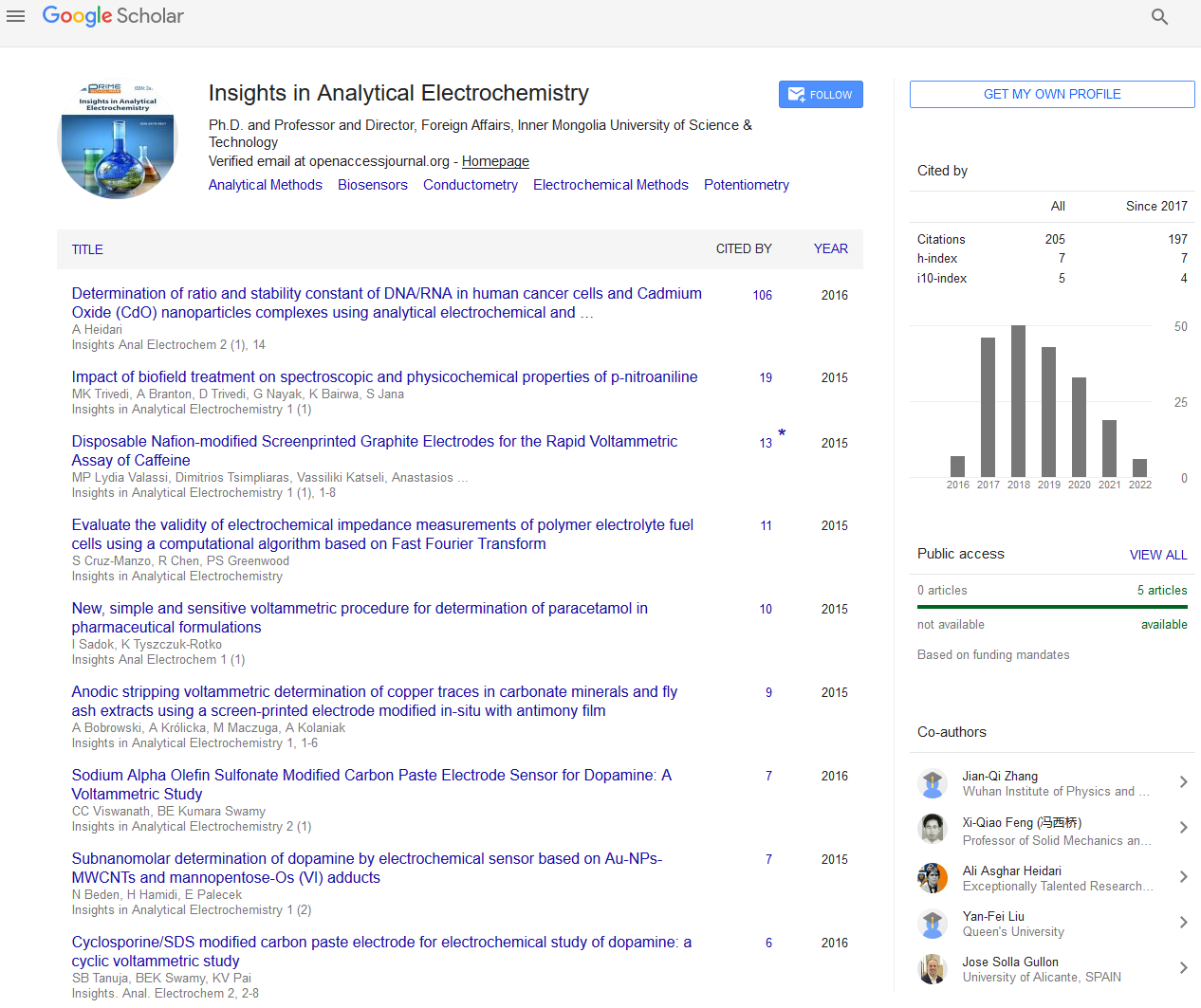Commentary - (2022) Volume 8, Issue 5
Study of two Commonly used Measures of Overall Antioxidant Capacity
Sheng Tang*
Department of Environmental and Chemical Engineering, Jiangsu University of Science and Technology, China
*Correspondence:
Sheng Tang,
Department of Environmental and Chemical Engineering, Jiangsu University of Science and Technology,
China,
Email:
Received: 31-Aug-2022, Manuscript No. IPAEI-22-14740 ;
Editor assigned: 02-Sep-2022, Pre QC No. IPAEI-22-14740 (PQ) ;
Reviewed: 16-Sep-2022, QC No. IPAEI-22-14740 ;
Revised: 21-Sep-2022, Manuscript No. IPAEI-22-14740 (R) ;
Published:
28-Sep-2022, DOI: 10.21767/2470-9867.22.8.22
Description
A test solution’s Total Antioxidant Capacity (TAC) is the quantity
of free radicals it scavenges, which is used to determine a sample’s
antioxidant capacity. One indicator of a food’s capacity to
function as an in vivo antioxidant is the blood’s antioxidant capacity.
The ORAC assay (oxygen radical absorbance capacity)
and the FRAP assay (ferric reducing ability of plasma) are two
commonly used measures of overall antioxidant capacity. Dietary
interventions do alter blood’s capacity for antioxidants.
For instance, serum ORAC levels were higher in people who
followed a diet high in chocolate and cocoa for two weeks
than in those who followed a control diet. However, not all
of these outcomes are consistent. For instance, plasma ORAC
does not change in people who consume procyanidins in the
same quantities as chocolate and cocoa powder after 6 or 12
weeks. TAC assays can also be divided into two groups based
on the chemical reactions involved methods based on Single
Electron Transfer (SET) or Hydrogen Atom Transfer (HAT). The
ability of an antioxidant to neutralize free radicals through hydrogen
donation is measured using HAT-based methods. These
techniques are pH-independent and typically take only a few
seconds to minutes to complete. The ORAC test is one example.
A potential antioxidant’s ability to reduce any compound,
including metals, carbonyls, and radicals, by transferring one
electron are determined by SET-based methods. They are usually
slower than HAT-based methods because they are pH-dependent
and based on per cent product decrease rather than
kinetics. The SET reaction is the foundation for the ferric reducing
ability of plasma (FRAP), CUPRAC, and TEAC assays. Numerous
tests have been developed as a result of the complexity
and variety of the investigated research topics, but sadly none have received widespread acceptance. As a result, choosing
the appropriate method for a given application is one of the
most difficult aspects of antioxidant testing. It is important to
determine which function of antioxidants is being measured,
and the antioxidant assay method should be chosen in accordance
with the function to be evaluated because antioxidants
may exert their effect through a variety of mechanisms, including
scavenging radicals, sequestering transition metal ions, decomposing
hydrogen peroxide or hydro peroxides, quenching
active prooxidants, and repairing biological damage. To bring
some order and agreement to this important field, more valid
and rigorous guidelines and assay protocols are required due
to the wide range of results for natural antioxidants in food
systems. A more specific methodology that is capable of defining
what products are formed and inhibited by antioxidants
based on conditions, systems, and targets of protection can
only improve our understanding of the effects of antioxidant
compounds. Naturally, it is important to keep in mind that TAC
and AOA are not like elemental analysis parameters for which
the analyst must obtain essentially the same result from multiple
techniques (for instance, measuring calcium in a milk sample
using multiple techniques should produce the same results
within tolerable limits). Instead, it is possible to obtain quite
distinct TAC or AOA results by employing the same probe in
various experimental conditions.
Acknowledgement
None.
Conflict of Interest
The author’s declared that they have no conflict of interest.
Citation: Tang S (2022) Study of two Commonly used Measures of Overall Antioxidant Capacity. Insights Anal Electrochem. 8:22.
Copyright: © 2022 Tang S. This is an open-access article distributed under the terms of the Creative Commons Attribution License,
which permits unrestricted use, distribution, and reproduction in any medium, provided the original author and source
are credited.

